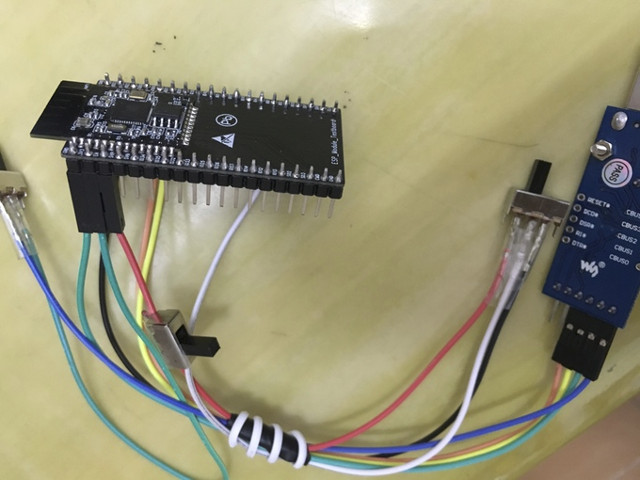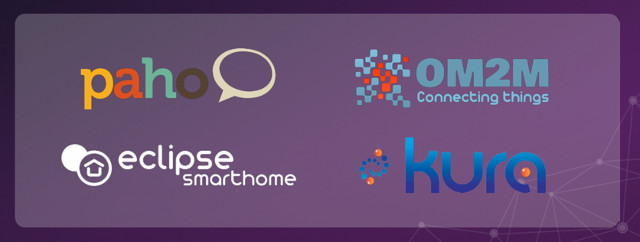Development boards and module based on Espressif ESP32 dual core processor with WiFi and Bluetooth LE connectivity are due for Q3 or Q4 2016, but you could get an early sample as early as July if you contribute to Jimmy Wu’s (of wifimcu.com) crowdfunding campaign to develop Luanode (Lua SDK) for ESP8266 and ESP32 processors, as ESP32 boards are part of the rewards. Luanode is a Lua SDK for ESP32 and ESP8266 that supports multi-tasking through FreeRTOS, and includes support for peripherals. The source code and documentation can be already be found on Github, and the main differences against something like NodeMCU appear to be multi-tasking and (for now) ESP32 support. Interestingly the SDK contains a tools called WiFi-Killer uses for Denial of Service (DoS) attacks using ESP8266 or ESP32 modules… One hardware project is called WiFi tank comprised of one T300 Tank Chassis, ESP8266 Development Kit, 720p HD Camera, […]
BusyBotNet is a Fork of Busybox with Security Tools
Busybox provides a lightweight version of common command line utilities normally found on “big” Linux into a single binary, in order to bring them to embedded systems with limited memory and storage. As more and more embedded systems are now connected to the Internet, or as they are called nowadays the Internet of Things nodes, adding security tools, such as cryptographic utilities, could prove useful for administrators of such system, and so BusyBotNet project wsa born out of a fork of Busybox. Some of the tools implemented include: fenc to encrypt stuff with salsa algo tsh. needs work, backdoor shell aes enc rathole backdoor shell, blowfish enc ssyn2 ddos tool sudp udp ddos tool jshon sh wrapper for json hydra prism userspace icmp triggered reverse shell backdoor You can access the source code and instructions on busyboxnet github repo. I’ve quickly tried it in my AMD x86 computer running Ubuntu […]
The Eclipse Foundation Releases Open Source Smart Home & IoT Gateway Frameworks, MQTT & oneM2M Implementations
The Eclipse Internet of Things (IoT) Working Group has released – or soon will be releasing – four open source projects for the Internet of Things with Eclipse SmartHome 0.8 framework, Eclipse Kura 2.0 IoT gateway framework, Eclipse Paho 1.2 MQTT & MQTT-SN clients, and Eclipse OM2M 1.0 implementation of oneM2M standard. Eclipse SmartHome 0.8 Eclipse SmartHome is a framework for smart home solutions that runs on embedded devices, including Raspberry Pi, BeagleBone Black or Intel Edison development boards. The latest SmartHome 0.8 release includes a new REST API and corresponding “Paper UI” administration interface, support for new devices including Sonos speakers, LIFX bulbs, Belkin WeMo devices, digitalSTROM systems, EnOcean devices (via a new OSGi EnOcean Base Driver) and others, as well as a new rule engine supporting templates for beginners, JavaScript for automation rules and graphical rule editors. You can find more details on Eclipse SmartHome page, and/or download SmartHome 0.8, […]
Apache Mynewt RTOS for IoT Includes an Open Source Bluetooth 4.2 LE Stack for MCUs
The Apache Software Foundation has recently released version 0.9 Apache Mynewt open source real-time operating systems for micro-controllers under… an Apache 2.0 license. The RTOS works on STMicro STM32 Cortex-M4, and Arduino Zero / M0 Cortex-M0 boards, but they’ve also implemented the first open source Bluetooth Low Energy stack for MCUs, starting with support for Nordic Semi nRF52 Cortex-M4 and nRF51 Cortex-M1 evaluation boards, and acting as a replacement for Nordic SoftDevice Bluetooth Smart / LE solution. The operating system competes with ARM mbed, the Zephyr Project, and RIoT, but the foundation claims it is the only one that’s both community driven and permissively licensed (Apache 2.0) project in the embedded space. The OS is modular and can be configured with a Go-like build and package management tool with components such as secure boot loader, flash file system and TLV storage mechanism, rich logging infrastructure, circular buffering schemes, and Bluetooth […]
Upcoming ARM TrustZone Webinars Explaining Embedded Systems / IoT Security to Non-security Experts
Most people understand that securing the IoT is important, but security is a highly a complex subject, and as seen with the many security breaches, even specialists – who in theory should now better – get their devices or online accounts hacked. So even if you are not a security expert, but are involved in the development of embedded systems, it’s important to get acquainted with online and offline security and understand how all this all work, at least from a high level perspective, without necessarily having to dig into the technical details. ARM is organizing two webinars catering to people who are not security experts, and explaining how they can secure embedded systems using the company’s TrustZone technology. The first webinar entitled “How to build trust and security into your embedded device” will allow participant to gain an understanding of the security that will need to be applied in […]
Marvell IAP220 “IoT” Processor Targets Low Power Touchscreen Enabled Appliances
After IAP140 quad core Cortex A53 processor found in Brillo compatible AndroMeda Box Edge, Marvell has recently introduced another IAP processor for the Internet of Things with IAP220 dual core Cortex A7 processor targeting “low power cost sensitive home automation, industrial, security, and wearable applications”. IAP220 SoC specifications: Processor – Dual ARM Cortex-A7 core up to 1.0 GHz GPU – 3D GPU with OpenGL ES 1.1/2.0 support MCU – ARM Cortex M4F Memory I/F – LP-DDR2/3, DDR3 Storage – eMMC and SDIO interfaces Display – MIPI video and command mode; LCD display Video – Full HD encode and decode with H.264, MPEG-4, H.263, MJPEG and more Camera – Digital video camera interface, 2x, 2-lane CSI Audio – I2S, TDM; support for multiple PDM (pulse-density modulation) microphones and speakers Sensor hub • Low power sensor processing Management I/O – SPI, GPIO, PWM? (the product brief says PWD instead), UART, 1-wire, I2C […]
Raspberry Pi 3 To Get ARM TrustZone Support with Linaro OP-TEE Port
If you ever wanted to experiment with ARM Trustzone, and IoT security, you’ll soon be able to do so with the Raspberry Pi 3 board thanks to a port of Linaro OP-TEE (Open Portable Trusted Environment Execution) by Sequitur Labs. Broadcom BCM2737 SoC found in Raspberry Pi 3 board already had TrustZone hardware for isolation and protection for sensitive material such as cryptographic keys, algorithms and data, but the upcoming software release will mean the feature can now be used, and it’s free for trial/evaluation, and education. Trustzone is also used for DRM (digital rights management), but in the case of Raspberry Pi 3 it will most likely used to teach how to secure the Internet of Things (IoT). The release is scheduled for July 11, with source code and documentation to be available in OP-TEE github account. All you’ll need to get started is a Raspberry Pi 3 board, […]
Frosted OS is an Open Source POSIX Operating System for Cortex-M Micro-controllers
Frosted, which stands for “Free Operating Systems for Tiny Embedded Devices”, is an OS with a POSIX-compliant system call API, borrowing the Linux kernel kconfig for configuration, and currently supporting ARM Cortex M0,M3,M4, and M7 MCU including Texas Instruments Stellaris LM3S, STMicro STM32F4/F7, and NXP LPC17XX micro-controllers. The developers are focusing on IoT applications, as well as porting retro-games such as Doom. The kernel relies on libopencm3 for hardware abstraction, and the operating system can be built with GCC ARM for Frosted using the source code released under a GNU GPLv2 license. The Wiki explains how to build and run the OS on either Qemu (in a Linux computer) used LM3S target, or an STM32F4 Cortex -M4 or STM32F7 Cortex-M7 board. The team also uploaded showing a video of Doom (fdoom) running on STM32F7 board, and possibly adapted from stm32doom port. If you are interested in joining the project you can […]










